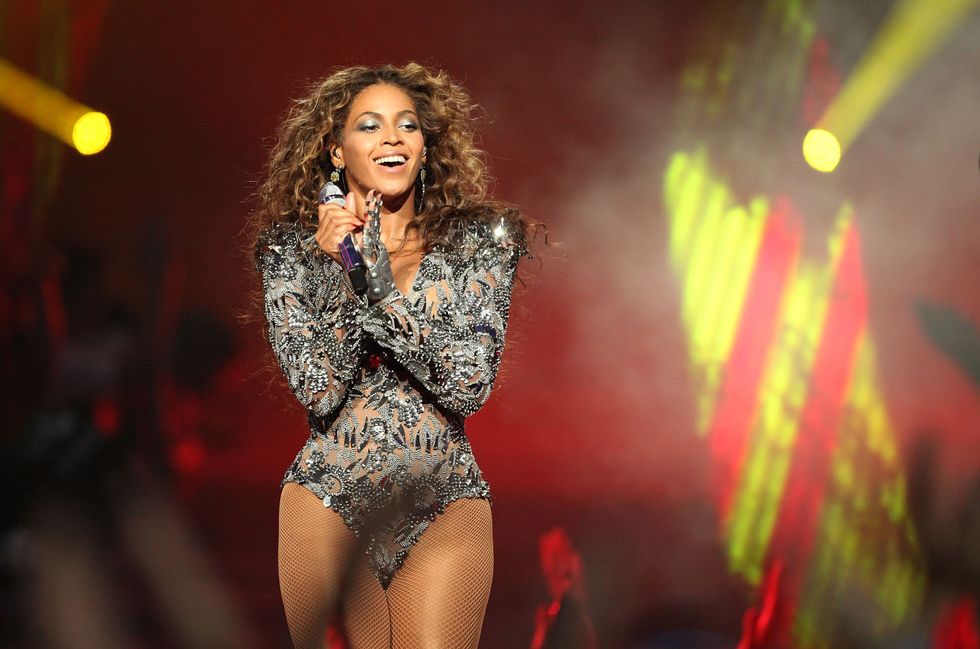Women have been under-represented as filmmakers in male-dominated Bollywood, but the scene seems to be changing slowly. With films like Raazi (2018), Gold (2018) and Gully Boy (2019) raking in huge moolah at the box-office, studios are ready to invest in movies helmed by women directors.
When we talk about one of the successful female filmmakers in Bollywood, Meghna Gulzar is the name that unfailingly pops us in our heads. Her last directorial Raazi, featuring feisty Alia Bhatt in the role of a spy, did not only garner rave reviews but also set the cash registers jingling. The espionage drama turned out to be one of the highest-grossing films of the year and Meghna Gulzar walked away with Filmfare Award for Best Director.
Incredibly adept at telling moving stories about strong women, Meghna is set to bring forth yet another important story. Her upcoming film Chhapaak is based on the life of acid attack survivor Laxmi Agarwal, played beautifully by Deepika Padukone. Ahead of the release of the film, Eastern Eye sat down with the filmmaker and tried to know more about Chhapaak, what led her to tell this socially-relevant story, the process of collaboration with Deepika Padukone as an actress and producer and much, much more. Excerpts…
What made you choose Chhapaak as your next directorial after Raazi?
After Talvar (2015), I was looking for a subject to work on next. Since Talvar was based on a real event, I thought that my next project should be based on a real-life event too. At that time, I did not even know that I was going to work on Raazi (2018).
So, I widened my radar to find out what was happening in our society, in our world. During that time, there were a lot of reports coming about acid attacks here and there. There was news of girls being attacked by acid, how their faces or organs were burned. I noticed these attacks were happening so frequently but the information on them was so less and, also, there was not much talk among people on it, as much as there should have been. That was the starting point where I decided to pursue on this subject.
What was your process after choosing the subject?
When you first start researching on acid violence in the country, the first case that comes to the fore is that of Laxmi Agarwal because her case was a landmark case on acid violence. Also, she is the most known acid survivor. That was the process of anchoring the story on Laxmi Agarwal’s experience and surround it with the acid violence subject.
What did you experience while making the film?
I do not feel anger hearing about such incidents, I have questions, because I think any problem that we have in our society, the answer to it should not be anger. To find the answer you have to find the solution and for that you have to think about it. So, my process is to think about it.
Were there any scenes that were difficult to shoot for you?
There were many. The scene where the actual attack was filmed was very difficult, the scene where she sees herself for the first time in the mirror after the acid attack was difficult. They were the emotional difficulties. Then there were difficulties when we had to shoot a live scene in the market or small alleys with Deepika Padukone. When you know that there are more than 600 people surrounding you and they do not move just so they could see Deepika Padukone is the physical difficulty we had to go through. I feel that when stories are difficult and the process of making the film is difficult then we have to work harder to overcome it, and when you see it on the big screen it looks far much better.
When did you decide to cast Deepika Padukone?
During the writing of the script. While researching, we saw pictures of Laxmi Agarwal, especially her before-attack pictures, and we saw glimpses of Deepika Padukone in them. They are very similar. For me, the similarity between the character and the actor is important. So, that was actually the starting point.
What made you to title your film as Chhapaak?
There were two options for the title of the film, first one was Gandhak which is the Hindi name for Sulphuric Acid. All that I knew was that we needed a powerful title because mostly when female director works with a female actor who is the female protagonist on a female character about a female-oriented story, there is a preconceived notion and to break that notion. I thought a strong title is necessary. It is a personal belief. So, I felt Gandhak was a strong word but I also knew there would be a title song in my film so the name of the film is important and Gandhak is not a lyrical word. Then we thought of the second name Chhapaak which is a phonetic name for splash which in itself is a lyrical word. It lends itself to song quite nicely, but what I loved about it was the meaning it hold for different people. There is chhapaak (splash) of rain drops falling and then when that liquid becomes acid that chhapaak is very different. For me that title resonated with the film and what we wanted to do with it.
The film is also questioning beauty standards, comparing outer and inner beauty. What are your thoughts on that?
I think that is more of your and audiences’ perception. We were making a film on acid violence. But if you all took beauty standards as a perception, then the privilege is ours to have you as our audiences.
How did you come to make films which are based on real-life incidents?
When I made Talvar, it was my first time in that genre. Before that my films were comparatively light-hearted, though I made sure the subject was strong in all my films may it be surrogacy or arranged marriage. Though films on true-life, including murder or police investigation, was a completely new world for me, I had fun-making it because the difficulty that comes with these kinds of subject builds character. The faith that Vishal Bhardwaj and Junglee Pictures had in me that I can make this film (Talvar) even though I had not made films for 7 years, and I got to live up to that faith which was very important for me.
Do you think nowadays filmmaking has become quite complicated?
Making a film is not difficult, it is the stories that are complicated, which is a great thing because it inspires everyone involved in it. While writing a script your imagination is in control, you can jump from one scenario to another, but you have to execute it too. So, when you start the breakdown of the script to execute the story that’s when the challenges start showing and overcoming those challenges is quite an inspiring process.
What is your process of writing a script?
I do a little research myself until I completely understand the subject. It’s for my benefit that I conduct a detailed reading and understanding. Talvar was the first film where I directed a film with somebody else’s script. It was Vishal Bhardwaj’s script. After that I have collaborated in the writing process with the writers and I am very fond of that process because when you sit with like-minded people and you have a creative exchange of ideas, the work is better and faster. Also, you get multiple perspective of the same subject.
After basic research, I know what the story is. About then you have a better understanding that with which writer you should collaborate. Then once you bring the writer onboard and you present your world to them, the give and take starts.
Do you keep the CBFC in mind while writing in order to avoid censorship?
I don’t keep them in mind even while making the film. Why practice self-censorship when telling these kinds of stories? It’s better not to make them. I feel that if you have a clean motive then CBFC’s scissor will not work.
Acid violence still prevails in India, what do you think will help in attracting government’s attention to prevent it?
As a public figure my first take is to make a film about it. Sometimes making a petition, making an issue nationwide or tweeting about it does not work. So, I am trying to create awareness through this film. Film is made, people will see it. Hopefully, the government also takes notice and hopefully it helps change some things.
How is Deepika Padukone as a producer?
Extremely hands on and extremely supportive, also very ambitious. When an actor accepts a role in your film it is like a validation for you, somebody recognised your intent and they want to be associated with your film. And when they join you as a producer too, then the validation doubles. It is a very big thing for any film, for any director.
Did Laxmi Agarwal see the film?
Yes, she has seen it. She gave the right reactions to the right scenes, which is very satisfactory for me and more importantly very validating for me that she liked the film.
When your name Meghna Gulzar is attached to a film, it automatically guarantees good content, do you feel the pressure of it?
I don’t see these expectations as a pressure or a burden. It’s my responsibility. If you see my name attached to the film and I was not able to give you a good film, I would have felt very bad. So, when people see my name and want to see the films I made and they expect a good film, it is something I am grateful for. So, I carry this expectation as a responsibility that I never disappoint you.
What made you choose to work with Vikrant Massey?
The character is a North Indian boy who is an activist. I have said this before also that it is important that the character and the actor kind of fit together physically as well, which I think Vikrant Massey fulfils. Since I have seen him in A Death in The Gunj (2017) I have wanted to work with him because I think he is extremely talented. In my films my female or male characters aren’t the hero-heroine types; they are more fleshed out. So, I feel my audience will love the character of Amol in Chhapaak, and getting somebody who is that likeable is very important.





 Beyoncé halts Cowboy Carter show after flying car nearly tips over crowd in HoustonGetty Images
Beyoncé halts Cowboy Carter show after flying car nearly tips over crowd in HoustonGetty Images 









 Charli XCX defends her Glastonbury set, calling autotune criticism outdated and dull BBC
Charli XCX defends her Glastonbury set, calling autotune criticism outdated and dull BBC 
 Kareena Kapoor says the incident left their children Taimur and Jeh shakenGetty Images
Kareena Kapoor says the incident left their children Taimur and Jeh shakenGetty Images  Kareena and Saif are now focusing on healing as a family after the traumatic episodeGetty Images
Kareena and Saif are now focusing on healing as a family after the traumatic episodeGetty Images 
 Festivalgoers watch British band Wolf Alice perform on the Other Stage on the final day of the Glastonbury festival Getty Images
Festivalgoers watch British band Wolf Alice perform on the Other Stage on the final day of the Glastonbury festival Getty Images